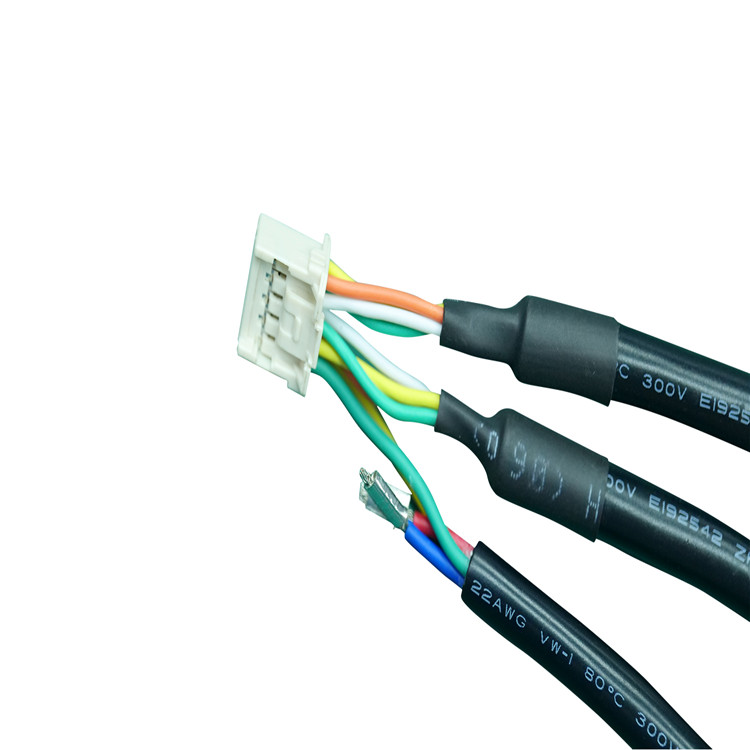What Are Industrial Cable Assemblies and Why Are They Critical for Mo...
Industrial cable assemblies are the backbone of modern manufacturing, enabling seamless communication, power distribution, and data transfer across complex machinery and systems. In this article, we explore what industrial cable assemblies are, their key applications, and why they are indispensable for today’s manufacturing ecosystems.
What Are Industrial Cable Assemblies?
Industrial cable assemblies are pre-configured bundles of cables, wires, connectors, and protective components designed to meet the rigorous demands of industrial environments. Unlike standard cables, these assemblies are engineered for durability, reliability, and performance in harsh conditions such as extreme temperatures, moisture, vibration, and exposure to chemicals.
Key components of industrial cable assemblies include:
- High-quality conductors (copper, aluminum, or fiber optics).
- Shielding to prevent electromagnetic interference (EMI).
- Robust insulation (e.g., PVC, TPE, or silicone) for thermal and chemical resistance.
- Custom connectors (e.g., RJ45, M12, or circular connectors) for secure mating.
- Protective jackets to withstand abrasion, UV exposure, and mechanical stress.
These assemblies are often custom-built to align with specific machinery, automation systems, or facility requirements.

Key Applications in Modern Manufacturing
Industrial cable assemblies play a pivotal role in virtually every manufacturing sector. Here’s how they’re used:
- Automation & Robotics
Cable assemblies connect sensors, actuators, and controllers in robotic arms and automated production lines. They ensure real-time data transmission for precision tasks like welding, assembly, and material handling. - Industrial IoT (IIoT) & Smart Factories
In connected factories, cable assemblies link IoT devices, PLCs (Programmable Logic Controllers), and SCADA systems. They enable predictive maintenance, remote monitoring, and data-driven decision-making. - Power Distribution
Heavy-duty cables deliver reliable power to motors, CNC machines, and HVAC systems. Shielded designs minimize energy loss and prevent downtime. - Motion Control Systems
Continuous-flex cables are used in moving machinery (e.g., conveyor belts, gantries) to maintain connectivity despite constant motion. - Hazardous Environments
Explosion-proof or intrinsically safe cables are critical in industries like oil and gas, chemical processing, and mining.
Why Industrial Cable Assemblies Are Critical for Modern Manufacturing
1. Ensuring Operational Continuity
Manufacturing downtime costs an average of $260,000 per hour (Deloitte). Industrial cable assemblies minimize failures by resisting wear, EMI, and environmental stressors. Their reliability keeps production lines running 24/7.
2. Supporting High-Speed Data Transfer
Modern manufacturing relies on real-time analytics and machine-to-machine (M2M) communication. High-performance assemblies with fiber optics or Cat6 cables enable lightning-fast data transfer, essential for AI-driven quality control and process optimization.
3. Enhancing Safety
Faulty wiring is a leading cause of industrial fires and equipment malfunctions. Industrial-grade assemblies meet stringent safety standards (e.g., UL, CE, RoHS), reducing risks of short circuits, overheating, or electrical hazards.
4. Reducing Maintenance Costs
Durable cable assemblies withstand years of use without degradation. This lowers replacement frequency and maintenance labor costs. For example, drag chain cables in automated systems are built to endure millions of flex cycles.
5. Enabling Scalability
Customizable cable solutions allow manufacturers to scale operations or integrate new technologies seamlessly. Modular assemblies simplify upgrades in legacy systems, supporting Industry 4.0 transformations.
6. Meeting Industry-Specific Standards
Industries like automotive (ISO/TS 16949), aerospace (AS9100), and medical (ISO 13485) require specialized cables to comply with regulations. Industrial assemblies are tested and certified for these applications.
Choosing the Right Industrial Cable Assembly
To maximize performance, consider these factors:
- Environment: Temperature ranges, exposure to chemicals, or outdoor use.
- Flexibility: Static vs. dynamic (continuous movement) applications.
- Signal Integrity: EMI shielding and impedance matching for data cables.
- Certifications: Ensure compliance with industry standards.
- Supplier Expertise: Partner with manufacturers offering design support and rapid prototyping.
Future Trends in Industrial Cable Assemblies
- Miniaturization: Smaller, high-density connectors for compact IoT devices.
- Hybrid Cables: Combining power, data, and fiber optics in one assembly.
- Sustainable Materials: Recyclable insulation and lead-free components.
- 5G Integration: Ultra-low latency cables for smart factory connectivity.

